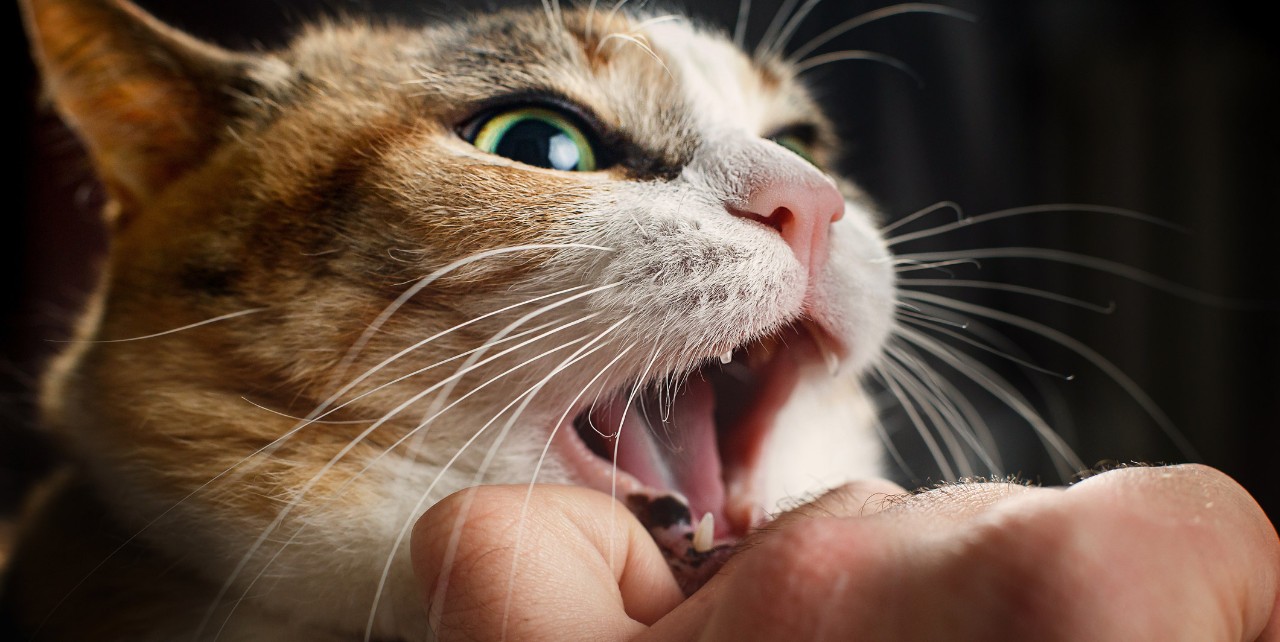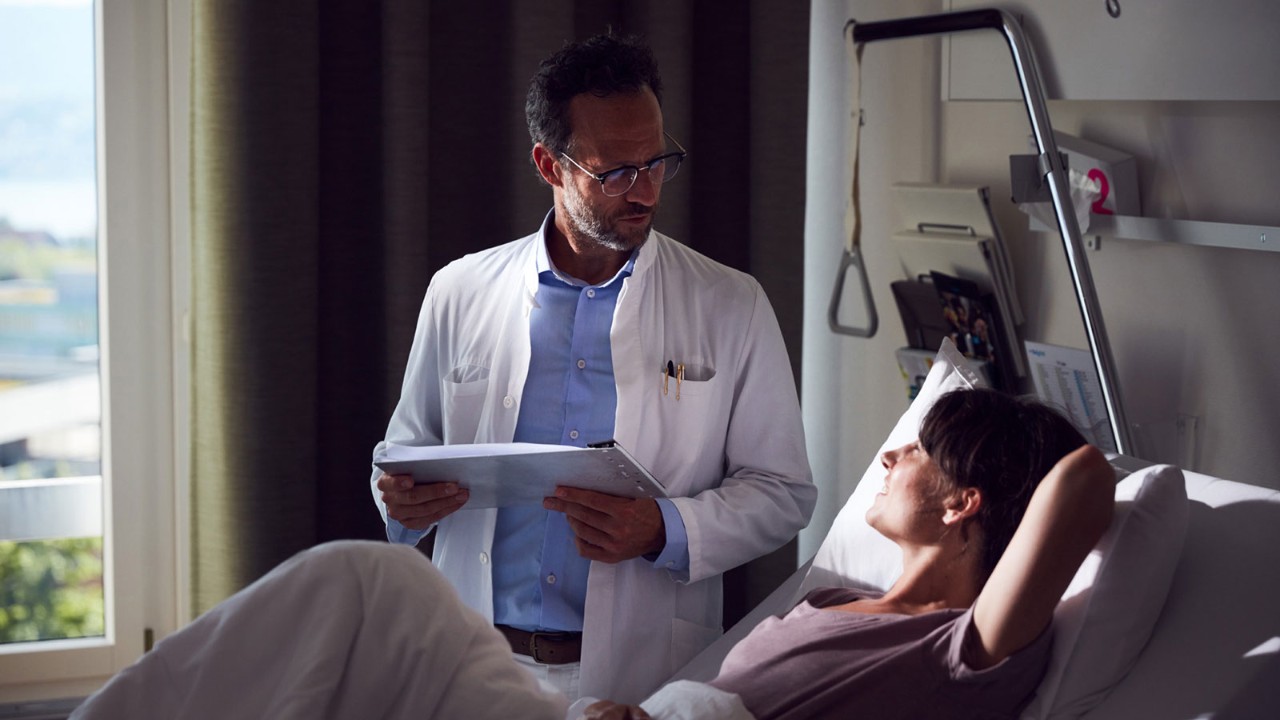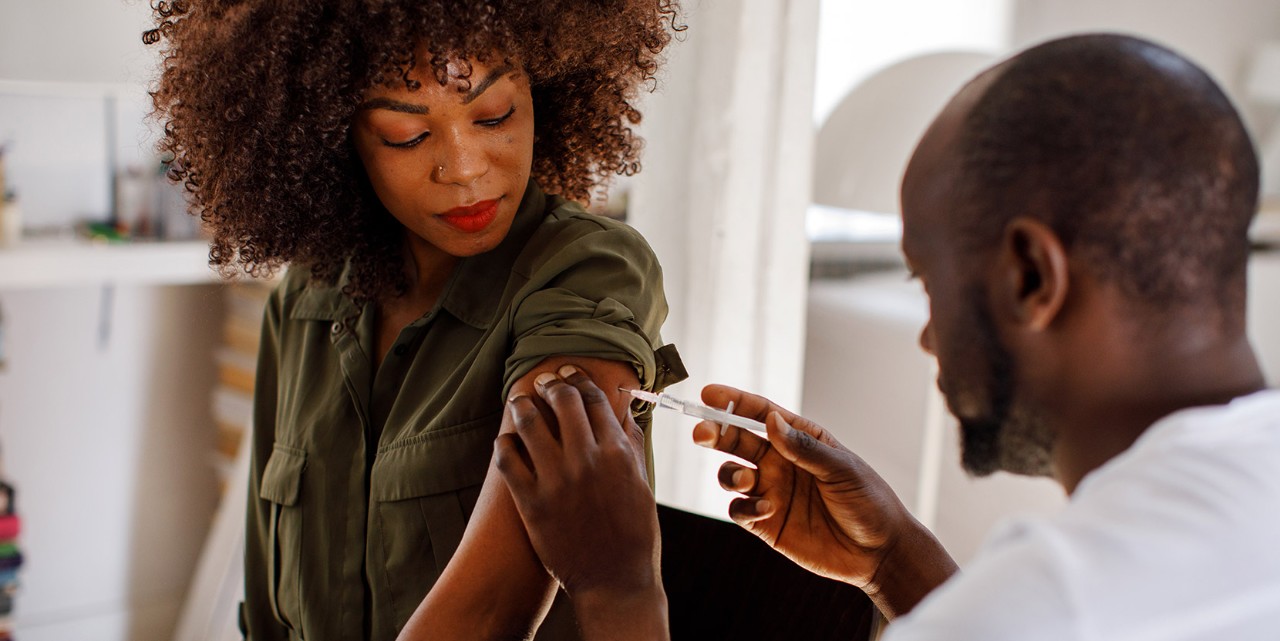How dangerous are animal bites?
Animal bites can be dangerous. If the wound isn’t treated promptly by a doctor, it can quickly become infected and even lead to blood poisoning.

The numbers speak for themselves: without medical care, around 80% of wounds from cat bites would become infected and, in the worst case, result in blood poisoning. The risk of infection is much lower with dog bites.
One reason for this is the shape of cat teeth, which are long and pointy, causing deep, stab-like wounds so the germs and bacteria from the cat saliva can penetrate deep into the tissue.
If the wound only bleeds a little, the bacteria is trapped inside, along with any tooth fragments that may have broken off. In the absence of treatment, this is the perfect starting point for both local and migratory infections. Because cats often bite at the hand or wrist. which means that their teeth quickly hit bones, joints and tendon sheaths. The latter in particular are very quick to spread germs, carrying the infection to other areas of the body. The same applies to the bloodstream and lymph channels.
Dog teeth may be less pointy, but they are much more powerful. The danger here therefore lies more in the severity of the injury. Either way, regardless of the type of pet, it is important to prevent the transmission of pathogens, check tetanus protection and assess the risk of rabies. In other words, all animal bites should be treated by a doctor, regardless of which of your pets has bitten you.
Asking an expert: Dr Sabrina Jegerlehner is an emergency doctor at Inselspital in Bern, where a total of 125 animal bites have been treated since summer 2021. 62 of these were caused by cats, 57 by dogs, 3 by snakes and one each by a fox, a ferret and a monkey.
Dr Jegerlehner, my cat has bitten me. What first-aid measures can I take at home?
Clean the wound as quickly as possible, preferably under running tap water. Then disinfect the wound, dry it and cover it with a compress and bandage. And try to move the body part affected as little as possible. This will help prevent the wound from swelling, which also makes it easier to examine it afterwards. If you have been bitten on the hand, you can tie an arm sling with a foulard or a triangular scarf, for example. And: If it was not your own animal, be sure to obtain information about the animal, especially about its origin and vaccination status. This information may be useful for further treatment.
What’s the next step: a medical practice or A&E?
It is essential that bite injuries receive immediate medical attention. If only because they require a three to five-day course of antibiotics, and you need a prescription for these. And with animal bites, the more time that passes until treatment, the greater the risk of infection. If patients wait before seeking medical attention, the treatment is often much more complicated than if they’d gone to the doctor straight away.
But to get back to your original question, smaller bite wounds can usually be treated successfully at your local medical practice. However, if deeper structures such as muscles or joints are affected or if the tissue is severely lacerated, it is easier to be treated with emergency care. If necessary, the plastic surgery ward is nearby, where the removal of dead tissue and placements of drains is part of the daily business. Both may be required even with seemingly innocuous looking cat bites, as these are often very tricky due to the depth of the bite.
What’s the treatment for animal bites?
To rule out the possibility of foreign bodies, such as tooth fragments, the bite site is often x-rayed. It is then examined carefully under local anaesthetic: How deep is the wound? Are there any debris or contaminants? The wound is then rinsed and disinfected. If the bite has lacerated the tissue, this is removed in order to help the wound heal.
If the wound is very deep, we speed up the process of wound secretion by draining it. Bite wounds are practically never sutured. It’s like a puddle: if it’s covered up, it can’t dry out. For a bite wound to heal well without getting infected, it needs to be dry. Depending on the size of the wound, it may be dressed with a sterile bandage. With more serious injuries, we recommend using a splint or sling to immobilise the body part affected to help reduce swelling.
Will I need a vaccination?
If your tetanus vaccine protection is insufficient, you will receive a booster after an animal bite. Depending on your age and the depth and/or contamination of the wound, a booster will be repeated every 5, 10 or 20 years. Depending on the type of animal involved, you may also need a rabies vaccine, especially for non-native dogs or dogs that you don’t know and wild animals such as foxes or bats. Depending on the probability of a corresponding transmission, we also support the active vaccination immunisation passively with the delivery of antibodies.
What’s the procedure when you get back home?
Remember to take the antibiotics daily for as long as prescribed and have painkillers on hand in case you need them. If you’re bitten on the arm, hand or leg, it helps to elevate and immobilise the body part affected initially so the swelling can go down.
You should change the dressing daily and inspect the wound for signs of infection such as redness, swelling and pus. In order to detect any complications in the healing process at an early stage, we generally recommend that the wound is checked by a medical professional after 48 hours. The next steps can also be discussed at this time. Generally speaking, If you’ve had the wound examined and treated by your family doctor or in hospital, there is very little risk of infection.
What if you’re bitten by another type of pet, such as a guinea pig, hamster, rabbit or rat?
Regardless of whether the bite is from a guinea pig, hamster, rabbit, rat, cat or dog, every animal bite requires medical treatment. And this treatment should be sought as quickly as possible so that the fresh wound can be examined and assessed. So the above procedure applies to a bite from any pet.
Dr Sabrina Jegerlehner is an emergency medical physician specialising in internal medicine. She works as a senior consultant at Inselspital in Bern, where she heads up the COVID track and co-manages the fast track. This is essentially an emergency practice, so she is very familiar with bite injuries.
Her research also focuses on immediate care, with point-of-care testing addressing immediate diagnosis, i.e. relocating the laboratory directly to the hospital bedside where possible.


